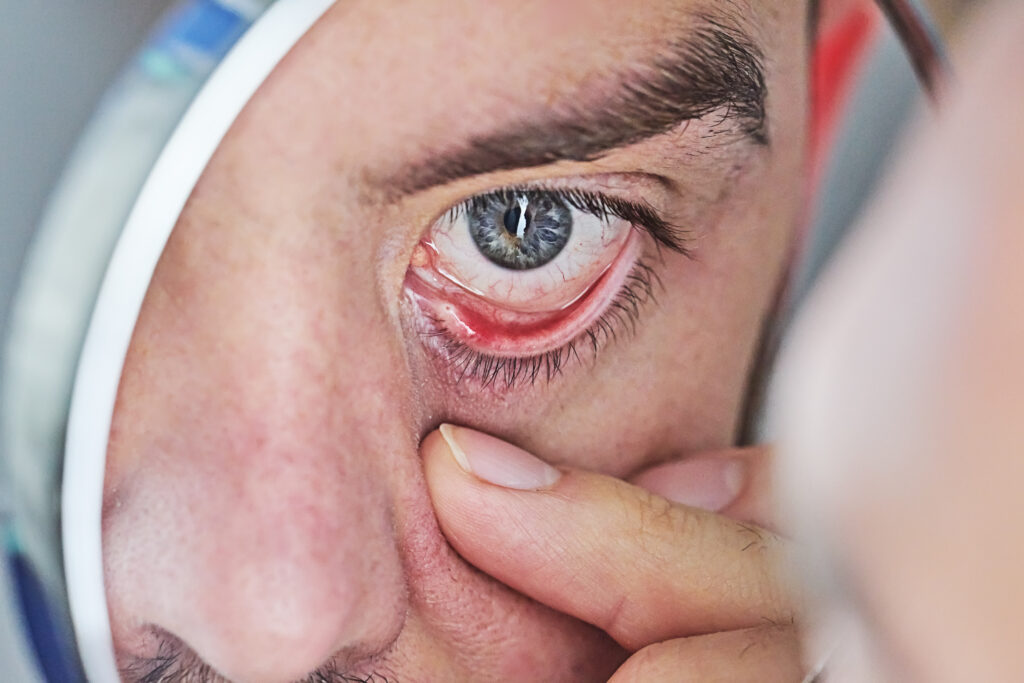Service & Facility
Service & Facility
Glaucoma

is a serious eye condition that can lead to blindness if left untreated. It is often referred to as the “sneak thief” of sight because it typically has no symptoms until the optic nerve is already severely damaged. Early diagnosis and treatment are crucial to prevent permanent vision loss.

Glaucoma

is a serious eye condition that can lead to blindness if left untreated. It is often referred to as the “sneak thief” of sight because it typically has no symptoms until the optic nerve is already severely damaged. Early diagnosis and treatment are crucial to prevent permanent vision loss.
Causes of Glaucoma:
Glaucoma occurs when the pressure inside the eyes (intraocular pressure or IOP) increases due to a buildup of aqueous humor fluid. This increased pressure can damage the optic nerve over time. The underlying causes of glaucoma can vary depending on the type of glaucoma.
Symptoms of Glaucoma:
In most cases, glaucoma is asymptomatic, particularly in the early stages. Many individuals are unaware of the condition until they experience significant vision loss. However, in acute angle closure glaucoma, which is a less common form, symptoms may include blurred vision (especially at night), halos or rainbows around lights, severe headaches or eye pain, and nausea.
Types of Glaucoma:
- Acute Angle Closure Glaucoma: Sudden increase in intraocular pressure due to closure of the peripheral drainage angle.
- Primary Angle Closure Glaucoma: Gradual obstruction of the eye’s drainage angle by the iris.
- Primary Open Angle Glaucoma: Inadequate fluid drainage through the open drainage angle, with no specific cause.
- Pseudoexfoliation Glaucoma: Obstruction of fluid drainage due to deposits of fibrillary material.
- Pigmentary Glaucoma: Obstruction of drainage structures by pigment dislodged from the iris.
- Angle Recession Glaucoma: Scar tissue from previous eye trauma obstructs fluid outflow.
- Neovascular Glaucoma: Abnormal blood vessel proliferation in the iris and drainage structures.
Normal Tension Glaucoma: Development of glaucoma despite normal eye pressure.
Childhood Glaucoma (Pediatric Glaucoma): Glaucoma occurring in babies and young children.
Glaucoma Risk Factors:
While glaucoma is more common in adults over the age of 40, age alone does not determine susceptibility. People with a family history of glaucoma, elevated intraocular pressure, diabetes, hypertension, high myopia (nearsightedness) or hyperopia (farsightedness), those who use steroids, and individuals who have had an eye injury are at an increased risk.
Diagnosis:
Experienced ophthalmologists perform comprehensive glaucoma screenings using various non-invasive procedures, including tonometry (measuring intraocular pressure), visual field tests, spectral domain optical coherence tomography (OCT) to assess the optic nerve, optic disc photography, pachymetry (corneal thickness measurement), and gonioscopy to evaluate the drainage angle.
Treatment Options:
Eye Drops: Prescription eye drops can help reduce intraocular pressure by either decreasing fluid production or increasing fluid outflow.
Oral Medications: In some cases, oral medications may be prescribed to lower eye pressure.
Laser Therapy: Laser treatment can open clogged channels and improve fluid drainage.
Filtering Surgery: Surgical procedures may be necessary when medication and laser treatment are insufficient. These surgeries create new passages for fluid drainage.
Implant Surgery: Tiny drainage devices or “aqueous shunts” can be inserted to maintain the drainage opening.
Minimally Invasive Glaucoma Surgery (MIGS): Recent advancements have led to the development of minimally invasive procedures that aim to lower eye pressure and prevent glaucoma progression. MIGS procedures use microscopic equipment and tiny incisions.
It is important to consult with an experienced ophthalmologist for a proper diagnosis and to determine the most suitable treatment
